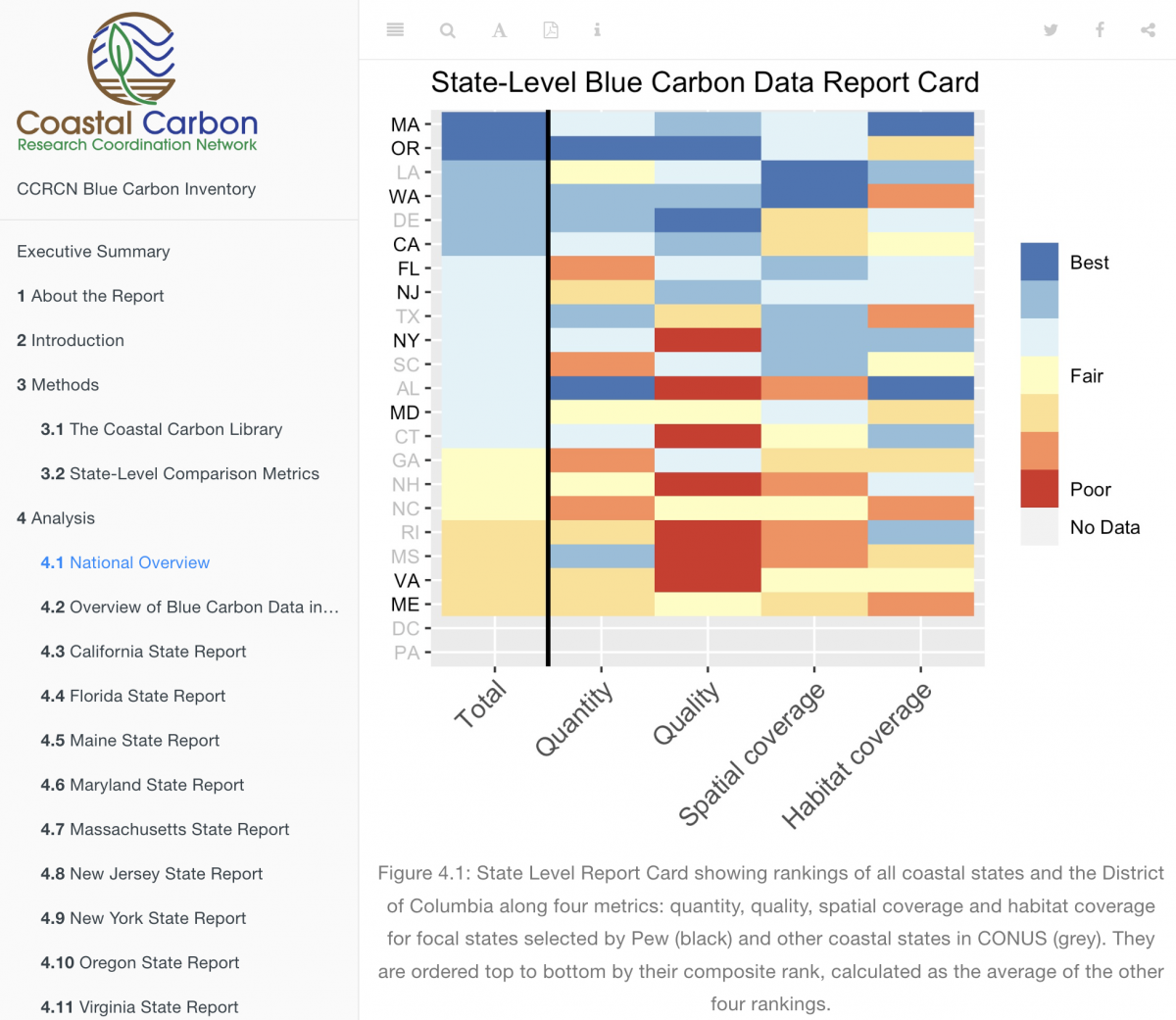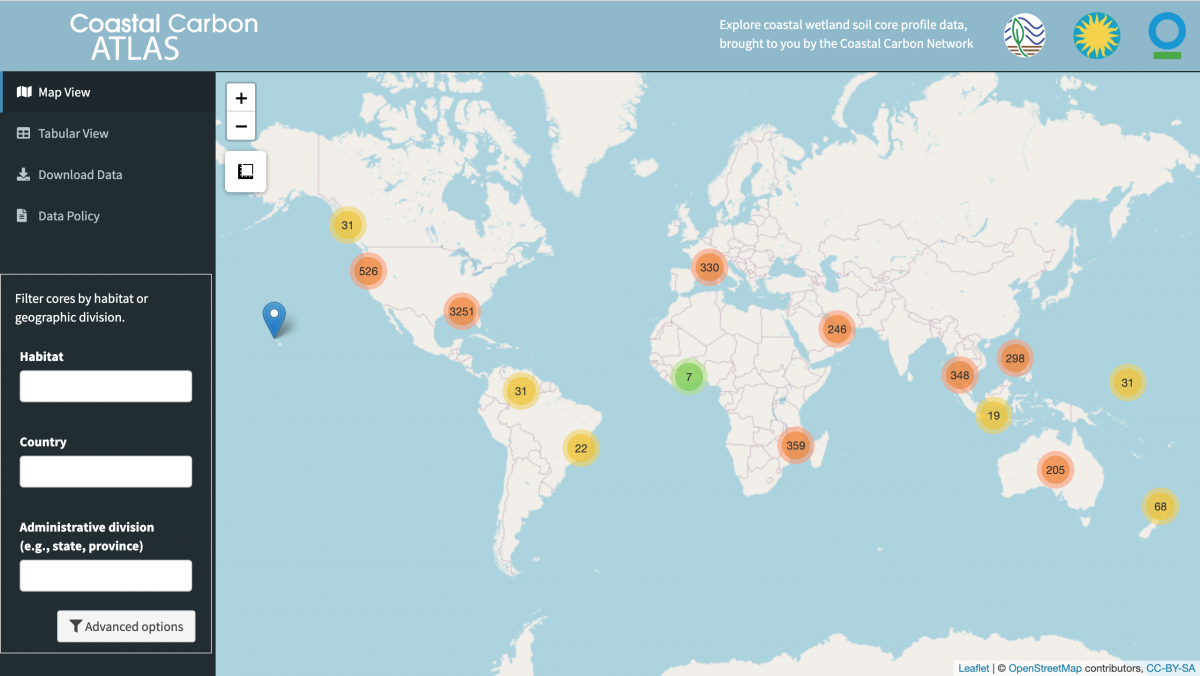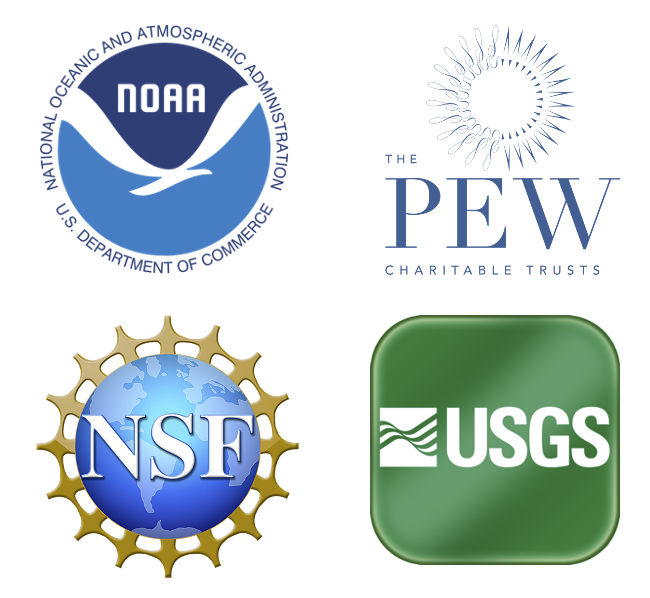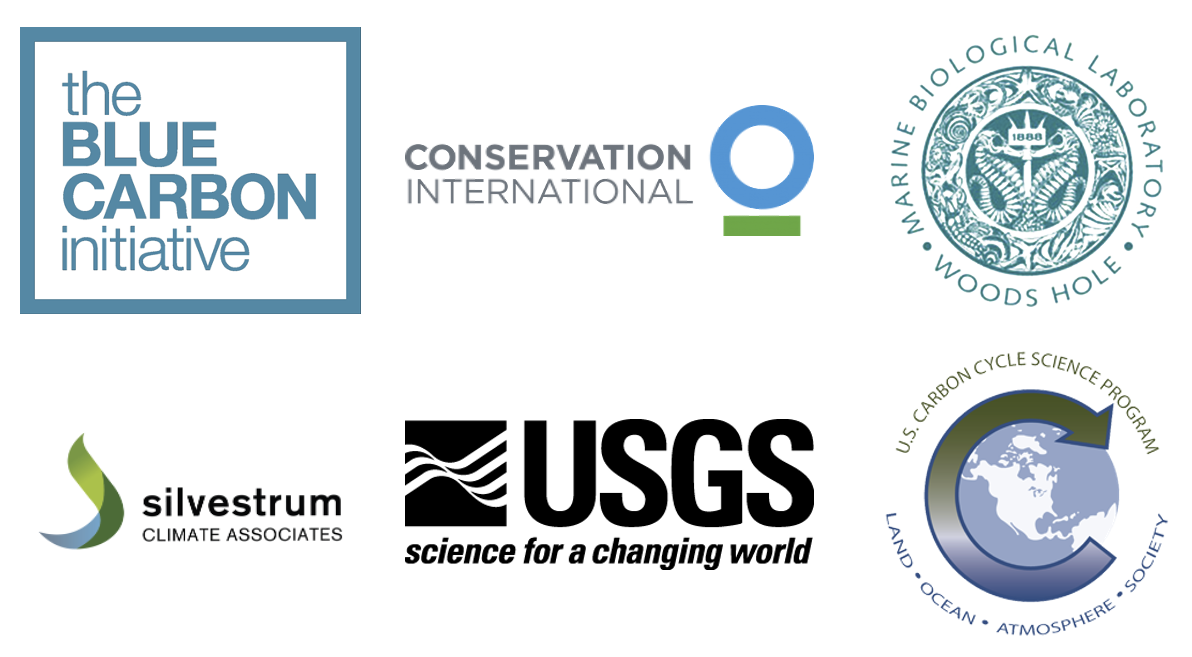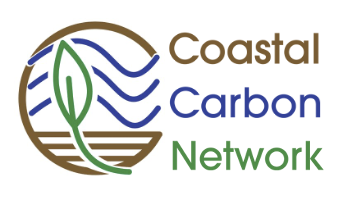
Building a Collaborative Network for Coastal Carbon Cycle Synthesis
Tidal marshes, mangrove swamps, and seagrass meadows are unique ecosystems found on coastlines worldwide. These wetlands support specialized plant, microbe and animal species that collectively form some of the Earth’s most productive ecosystems, influencing the ecology of estuaries and coastal oceans. Coastal wetlands are also under severe pressure from human activity which threatens to diminish the many benefits they provide to people and aquatic food webs. Among these benefits is the fact that they remove large amounts of the greenhouse gas carbon dioxide from the atmosphere and bury it in soils for centuries to millennia. Indeed, these ecosystems account for nearly 50% of the organic carbon buried in the oceans despite occupying less than 1% of ocean area. This surprising fact suggests an opportunity: that protecting, restoring and managing these ecosystems could help manage greenhouse gas concentrations in addition to the list of other ecological and social benefits they provide. The pace of research on this topic has accelerated and is now too rapid to be synthesized by individual investigators.
The Coastal Carbon Network (CCN) is a consortium of biogeochemists, ecologists, pedologists, and coastal land managers with the goal of accelerating the pace of discovery in coastal wetland carbon science by providing our community with access to data, analysis tools, and synthesis opportunities. Our Network seeks to catalyze scientific discovery, advance science-informed policy, and improve coastal ecosystem management by: (1) developing a community dedicated to coastal wetland carbon science for basic research, policy development, and management, (2) exploring the ecological links between coastal wetlands, estuaries, and the atmosphere, and (3) sharing data and analysis tools that support the diverse needs of scientists, policy makers and managers. We accomplish this goal by growing iteratively with community feedback, facilitating the sharing of open data and analysis products, offering training in data management and analytics, and leading topical working groups aimed at quantitatively reducing uncertainty in coastal greenhouse gas emissions and storage.
Coastal Carbon Network News
Browse CCN Products
Coastal Carbon Atlas
The Coastal Carbon Atlas is an interactive web application developed and maintained by the CCN to promote the exploration, query, and download of data from tidal wetlands around the world.
Blue Carbon Data Inventory
The CCN collaborated with Pew Charitable Trusts to produce a report on the state of blue carbon data in the contiguous United States. In this first-ever inventory of our database, we assess the quantity, quality, and representativeness of soil core data on a state-by-state basis.
